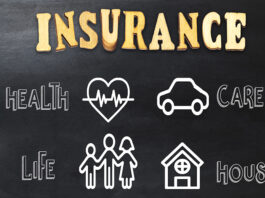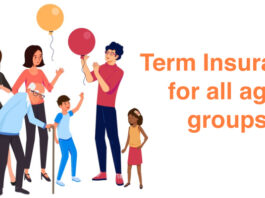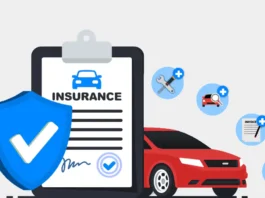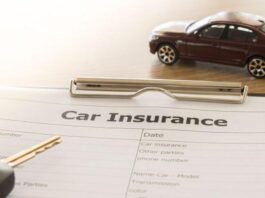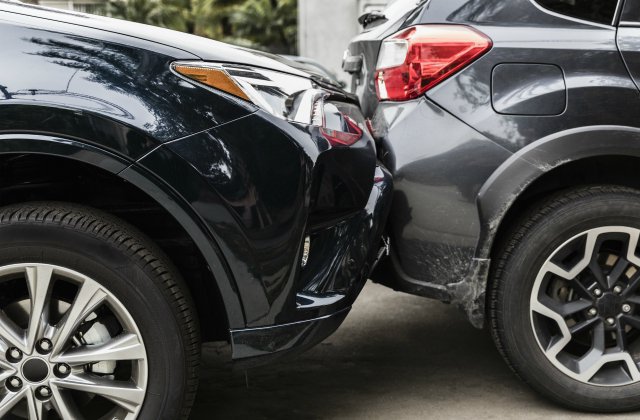
There’s just no other way around it: Car insurance is something you need. Your state car insurance regulations most likely need you to have some sort of insurance protection. Your automobile funding or renting firm likewise probably calls for insurance coverage, and also let’s face it, you most likely do not wish to need to come up with thousands of bucks for lorry repairs, home repairs, or clinical expenses in case of an accident
In brief, you purchase insurance coverage from a vehicle insurance company. You pay annual costs, as well as if you have a mishap, you make a case that covers your monetary losses that happened due to the accident.
Obtaining a bargain on car insurance is everything about finding the equilibrium between the protection you want and rates that fit your budget plan. We had a look at car insurance rates throughout a variety of driver profiles to help you locate the most inexpensive car insurance companies amongst the major insurers. Note that the “research study rates” provided listed below are a simple average across a wide variety of driver accounts. The prices available to you may be higher or reduced.
Cheapest Car Insurance Companies
- USAA is the cheapest car insurance company, and it offers the lowest car insurance rates in the country, according to our analysis. This insurer has a low representative rate of just $885 per year, which is nearly $300 less than the next cheapest insurance company in our study. USAA has the lowest study premiums for nearly every driver profile we analyzed, and even when it wasn’t the absolute cheapest, it wasn’t much more expensive than its cheaper rival.
- Geico is the second-cheapest car insurance company, with a study rate of $1,168 annually. That’s quite a bit more expensive than USAA’s representative rate, but it’s still around 17% cheaper than the national average in our analysis. Geico offers some of the lowest study rates for nearly every driver profile, except the one with a DUI. This insurance company really stands out from its competitors when we look at our 25-year-old driver profiles. Geico’s representative rates for these profiles are hundreds of dollars cheaper than nearly every other insurer offers.
- State Farm is the third-cheapest car insurance company in our study. With an annual representative rate of $1,234, State Farm is cheaper than the national average. According to our analysis, this insurer is a great option for representative profiles with less-than-stellar driving records. State Farm’s study rates are well below the national average for the profiles with a speeding ticket or an accident. This insurer was the cheapest of all for the profile with a DUI.
- Travelers is the fourth-cheapest car insurance company in our ranking of the cheapest insurers. It’s still within striking distance of State Farm and Geico, however, with a representative premium of $1,267 per year. Across the range of our driver profiles, regardless of age, gender, credit score, or driving history, Travelers had study rates that were a bit below average.
- Progressive is the fifth-cheapest car insurance company. Its representative rate is still a bit below the average among all the companies, with a study premium of $1,373. The same is true across most of our driver profiles, with Progressive’s rates hovering close to or just below the average. Progressive is a great option for the driver profile with a DUI, with a study rate much lower than average. However, it is among the most expensive for the profile with an accident.
- American Family is the sixth-cheapest car insurance company, with a study premium of $1,391. This is the last auto insurance company with a representative rate that is lower than the national average. Like Progressive, American Family stayed right around the average among the nine insurers for most of our driver profiles, but it strayed toward the cheaper end for the profiles with poor driving histories.
- Farmers is the seventh-cheapest car insurance company. Its study rate of $1,682 annually is about 20% higher than American Family’s representative premium. It’s also a couple of hundred dollars more expensive than the national average. Farmers’ study rates are consistently on the expensive side for all of our driver profiles (though it is never the most expensive).
- Nationwide is the eighth-cheapest car insurance company, and its annual study rate of $1,864 is about $200 more expensive than Farmers’ representative rate, and more than $400 higher than the national average. More damningly: Nationwide is more than twice as expensive as USAA. This car insurance company is particularly expensive for our 25-year-old driver profiles, as well as those with poor driving histories. For the profile with a DUI, Nationwide has a study rate of more than $4,000 per year, or nearly $350 per month.
- Allstate is the most expensive car insurance company in our study, though just by a hair. This company’s study rate of $1,880 only costs about $1 more per month than Nationwide’s. Still, Allstate ultimately takes the dubious crown as the most expensive auto insurer in our analysis, with especially high rates for our 35- and 60-year-old driver profiles. Allstate also heavily penalizes driver profiles with fair or poor credit.
It’s important to note that our data may not include all states in which each of these companies operate. Study rates for Allstate, Geico, and State Farm are based on data reported in all 50 states and the District of Columbia, while USAA is based on data from 48 states, Progressive on data from 47 states, Nationwide on data from 43, Farmers on data from 31, Travelers on data from 24, and American Family on data from 19.
How We Found the Cheapest Car Insurance Companies
we’re all about helping people make life’s important decisions. Our college rankings, launched in 1983, set the standard in educational rankings. Our ranking in other fields, like healthcare, civic areas, and the automotive sphere, help people and thought leaders make choices that make lives better. Now we’re continuing to empower you with the information you need to make the right choices for your life with our Cheapest Car Insurance Rankings.
Our Study Rates
with Quadrant Information Services to provide a report of average insurance rates in all 50 states from the 10 largest national car insurance companies. Quadrant obtained rate data provided by car insurers to state regulators, based on profiles for both male and female drivers aged 25, 35, and 60. Vehicles used include 2015 and 2018 models of the Honda Civic, Toyota RAV4, and Ford-F-150, with an annual mileage of 6,000 and 12,000. Three car insurance coverage levels were used, as were credit tiers of good, fair, and poor. Clean driving records and records with one accident, one speeding violation, and one DUI were also used in the calculations.
To get the study rates shown here, we computed the mean rate for male and female drivers ages 24, 35, and 60 who drive 12,000 miles per year, have medium coverage, good credit, and a clean driving record. The rates shown here are for comparative purposes only and should not be considered “average” rates available by individual insurers. Because car insurance rates are based on individual factors, your car insurance rates will differ from the rates on our site.
How Much Is Car Insurance?
According to our study, the national average representative rate among the nine largest car insurance companies in the country is $1,416. That being said, it’s not possible to say exactly what it will cost you since insurers set rates using a wide range of personalized data.
To demonstrate how much car insurance rates can fluctuate, we’ll look at how age or gender can affect the premiums in our study. The 25-year-old male driver profile had the highest average study rate, at $1,669, followed closely by the profile of a 25-year-old female, which had an average of $1,593. The lowest representative premium we found was for the 60-year-old female profile ($1,229), and then the 60-year-old male profile ($1,267). The rates for the 35-year-old profiles were right around $1,370 for both males and females.
Your driving record influences your car insurance rates. In our study, driver profiles with a clean driving record have a simple average representative rate of $1,416 per year in car insurance premiums. Driver profiles with one speeding ticket have an average of $1,724, and driver profiles with one accident have a study rate of $2,028 based on the data and simple averages used in our study. Driver profiles with one DUI conviction in our study had the highest representative rates of all, at $2,464, or an extra $1,000 per year over the profile with a clean record.
You may not realize this, but your credit score plays a big role in determining how much you pay for car insurance. Our baseline driver profile with a good credit score had an average rate of $1,401 per year among all the insurers in our study. With a fair credit score, our driver profile saw an increase of about 19% annually, which is a study rate of $1,666. The driver profile with a poor credit score was hit even harder: This profile’s average representative premium of $2,353 annually is 71% (or nearly $1,000) higher than the study rate for the profile with good credit.
The kind of car insurance coverage you choose affects your rates as well. Driver profiles with bare-bones car insurance coverage saw study rates of $1,341 per year on average, while driver profiles with medium coverage had study rates of $1,416. Driver profiles with high coverage had study rates $1,491 on average. While it may be tempting to save some money on your car insurance premiums by opting for lower coverage, not having enough coverage for your situation can be a costly mistake if you have to make a claim. The study rates for low and high coverage in our example show that more protection only costs about $12.50 more per month. Read How Much Car Insurance Do I Need to find the right car insurance coverage for your situation.
Cheapest Car Insurance for Good Drivers
The cheapest car insurance company for a driver profile with a clean record is USAA, at just $885 per year. USAA is limited to people with a military affiliation, however, so for driver profiles that don’t qualify, Geico comes in second, with a study rate of $1,168. You may read this and think that these rates sound a lot like the overall average rates mentioned above, and you would be correct. That is because we used good drivers as our baseline profiles to get the average representative rates. This makes it possible to see how the study premiums change as we add a speeding ticket or accident, or give the profile a lower credit score.
Being a safe, experienced driver with no accidents or citations on your record is the best way to get cheap car insurance. Safe drivers are the kinds of clients car insurance companies want to have on their books because safe drivers are unlikely to make a car insurance claim. As a result, they get charged lower rates than drivers with speeding tickets or accidents in their recent past.
To find these representative rates, we made driving profiles with a clean record. These driving record representative profiles were based on 25-, 35-, and 60-year-old males and females with 12,000 miles per year, a medium level of insurance coverage, and a good credit score. Vehicles used in the analysis are the 2015 Honda Civic, 2015 Toyota RAV4, and 2015 Ford F-150.
| Company | Clean record |
|---|---|
| USAA | $885 |
| Geico | $1,168 |
| State Farm | $1,234 |
| Travelers | $1,267 |
| Progressive | $1,373 |
| American Family | $1,391 |
| Farmers | $1,682 |
| Nationwide | $1,864 |
| Allstate | $1,880 |
What Happens to Car Insurance After a Speeding Ticket?
When you get a speeding ticket, your car insurance rates will probably go up. In our study, we found that a single speeding ticket raised representative premiums by about 22%, from an average of $1,416 with a clean driving record to $1,724 with a speeding ticket.
Cheapest Car Insurance for Drivers With a Speeding Ticket
While all of the insurers in our analysis showed increased study rates for our driver profile with a speeding ticket, some companies raised rates much more than others. USAA was still the cheapest option for this driver profile, but American Family raised rates the least (with an increase of $106).
Nationwide was the most expensive at $2,263, with an increase of $399 over the profile with a clean record. Travelers had the biggest increase in study rates, however, charging the profile with a speeding ticket $454 more per year, or an increase of 36% from the clean driver profile’s representative premium.
For these rates, we used profiles with a single speeding ticket. The profiles covered males and females in the 25-, 35-, and 60-year-old age groups with a medium level of insurance coverage, a good credit score, and 12,000 miles of driving annually. The vehicles used in our study are the 2015 Honda Civic, 2015 Toyota RAV4, and 2015 Ford F-150.
| Company | With 1 speeding violation |
|---|---|
| USAA | $1,041 |
| State Farm | $1,375 |
| American Family | $1,497 |
| Geico | $1,510 |
| Travelers | $1,721 |
| Progressive | $1,803 |
| Farmers | $2,099 |
| Allstate | $2,212 |
| Nationwide | $2,263 |
What Happens to Car Insurance After an Accident?
If you get in a car accident, your insurance premiums will almost certainly be higher. Our profile of a driver with a single accident had study rates that were 43% higher than the profile with a clean record. The average increase was about $600 per year.
Cheapest Car Insurance for Drivers With an Accident
For this driver profile, USAA is once again the cheapest option. State Farm is the next cheapest, and it had the smallest increase in study premiums over the clean driver profile (only $253 more per year).
At the high end, Nationwide was the priciest auto insurance company for the profile with an accident, but Progressive raised its study rates the most. A profile insured with Progressive had an increase of $952 following an accident. That’s about 69% higher than the representative rate with a clean record.
Our profiles for this analysis have a single accident, and are based on 25-, 35-, and 60-year-old males and females with 12,000 miles per year, a medium level of insurance coverage, and a good credit score. Vehicles used in the analysis are the 2015 Honda Civic, 2015 Toyota RAV4, and 2015 Ford F-150.
| Company | With 1 accident |
|---|---|
| USAA | $1,229 |
| State Farm | $1,487 |
| American Family | $1,684 |
| Geico | $1,802 |
| Travelers | $1,842 |
| Progressive | $2,324 |
| Farmers | $2,446 |
| Allstate | $2,673 |
| Nationwide | $2,766 |
What Happens to Car Insurance After a DUI?
Getting a DUI is just about the worst thing you can do if you want to keep your auto insurance premiums low. Our analysis of representative rates found an increase of 75% for our driver profile with a DUI over the one with a clean record. In absolute terms, the average increase was more than $1,000 per year, or almost $85 per month.
Cheapest Car Insurance for Drivers With a DUI
With a DUI added to our driver profile, State Farm comes in as the cheapest option, at $1,681. USAA isn’t far behind, however, at $1,683. American Family had the smallest increase in study rates for this profile, charging only $335 more (about 24%).
Nationwide was the most expensive of all, with a representative premium of $4,011 (an increase of $2,147). By percentage, however, Geico had the largest comparative rise in study rates, with an increase of 153% from $1,168 for the profile with a clean record to $2,958 for the one with a DUI.
To find the average study rates for a profile with a DUI, we made profiles for males and females in each of the following ages: 25 years, 35 years, and 60 years. The profiles have insurance coverage for 12,000 miles per year, a medium level of insurance coverage, and a good credit score. We used three vehicles for our driver profiles: the 2015 Honda Civic, 2015 Toyota RAV4, and 2015 Ford F-150.
| Company | With 1 DUI |
|---|---|
| State Farm | $1,681 |
| USAA | $1,683 |
| American Family | $1,726 |
| Progressive | $1,793 |
| Travelers | $2,430 |
| Farmers | $2,640 |
| Geico | $2,958 |
| Allstate | $3,252 |
| Nationwide | $4,011 |
What Happens to Car Insurance With Bad Credit?
Perhaps surprisingly, a bad credit score has almost as big of an effect on your car insurance as getting a DUI. In our study, the driver profile with a poor credit score had representative premiums that were on average 71% higher than those for the profile with good credit. We found an average increase of $952 per year.
Cheapest Car Insurance for Drivers With Bad Credit
When we analyzed representative car insurance rates for driver profiles with poor credit, we found an interesting result. USAA has the lowest study premiums for this profile, but it had one of the largest percentage increases. At $1,653, USAA’s study rate increased by 90% over the profile with a good credit score. Nationwide only increased its representative rate by 38%, which is the lowest percentage increase of all the companies we studied.
The driver profile with poor credit should avoid Allstate and State Farm. Allstate is the most expensive of all, with a study rate of $3,025, while State Farm’s representative premium increased by nearly 123%, hitting $2,745.
Our study verified that credit score also affects car insurance rates using male and female driver profiles with ages of 25 years, 35 years, and 60 years. We created a profile for each level of credit score (good, fair, and poor) and assigned the profiles a clean driving record, a good credit score, a medium level of insurance coverage, and 12,000 miles of annual mileage. The 2015 Honda Civic, 2015 Toyota RAV4, and 2015 Ford F-150 are the vehicles used in our analysis.
| Company | Poor |
|---|---|
| USAA | $1,653 |
| Geico | $1,855 |
| Travelers | $2,095 |
| American Family | $2,277 |
| Progressive | $2,308 |
| Nationwide | $2,549 |
| Farmers | $2,669 |
| State Farm | $2,745 |
| Allstate | $3,025 |
Cheapest Car Insurance Coverage
If you want the cheapest car insurance coverage, you can choose to only get the bare minimum insurance coverage required by law. If you lease or finance your car, your leasing company or lender may also require that you have certain types of coverage. Beyond those minimums, however, the amount of insurance coverage you get is up to you, and it’s tempting to save on monthly premiums by skimping on insurance coverage.
However, before you go for the least amount of car insurance you can get away with, know that opting for low insurance coverage may not save you that much. According to our data, driver profiles with low insurance premiums had a study rate of $1,341 per year. Medium coverage profiles had a study rate of $1,416, and high coverage profiles had study rates of $1,491. Based on this data, going for low coverage instead of high coverage only saves $150 per year on average.
In our study, Nationwide and American Family had the smallest increases in study rates when going from low coverage to high coverage, with rises in representative premiums of just $31 and $84, respectively. On the other hand, Progressive, Allstate, and Farmers all raised their study rates by more than $200 to go from low to high coverage. Still, $200 over the course of the year is only around $16 per month.
| Company | Low | Medium | High |
|---|---|---|---|
| Allstate | $1,772 | $1,880 | $1,983 |
| American Family | $1,329 | $1,391 | $1,413 |
| Farmers | $1,582 | $1,682 | $1,787 |
| Geico | $1,088 | $1,168 | $1,255 |
| Nationwide | $1,861 | $1,864 | $1,892 |
| Progressive | $1,274 | $1,373 | $1,489 |
| State Farm | $1,143 | $1,234 | $1,326 |
| Travelers | $1,192 | $1,267 | $1,335 |
| USAA | $830 | $885 | $940 |
Saving around $150 a year is nothing to sneeze at, especially if you’re on a tight budget. With the potential costs of a car accident, however, that short-term savings can cost you quite a bit if you have an accident. Say, for example, you get a low coverage policy that only offers $15,000 in coverage for medical costs, and you’re at fault for an accident that injures someone and results in $30,000 worth of medical bills. Once your insurance pays out the $15,000, you can be sued for the rest of the money. That can result in the loss of assets, like your house or savings. When choosing insurance coverage, think about the assets you’ll want to protect in the event of an accident, not just your monthly premiums.
https://wowplus.net/finest-28-online-jobs-from-home-in-2020/
Most major insurers offer car insurance coverage in three general tiers: low, medium, and high (even if they don’t necessarily advertise it as such). We created identical profiles in our study to represent drivers, then found out how rates changed with the three levels of coverage. The profiles were assigned a clean driving record, a good credit score, and 12,000 miles of annual driving. We used both males and females with the ages of 25, 35, and 60. The 2015 Honda Civic, 2015 Toyota RAV4, and 2015 Ford F-150 are the vehicles used in our analysis.
Why Does Car Insurance Cost So Much?
Car insurance costs so much because car accidents cost so much. The National Highway Traffic Safety Administration reports that in 2010, the most recent year with available data, motor vehicle crashes in the U.S. cost the economy $242 billion in lost productivity, health care costs, emergency services, legal costs, and property damages. A good chunk of those costs is paid for by insurance companies. To stay in business, insurers need to take in more in premiums than they pay out in claims. That’s how car insurance works.
Car insurance companies set their rates based on a number of factors that basically boil down to how likely they think you are to make a claim. The ideal customer for a car insurance company is an experienced, safe driver who lives in an area with little congestion, crime, or risk of natural disaster, who drives a car that’s inexpensive to fix, and who doesn’t drive all that much. That customer is likely to pay premiums for years without ever having an expensive claim, and the insurance company will make a profit.
Because where you live can affect your risk of an accident, it’s something car insurance companies consider when calculating your rates. If you live in an area with a lot of crime and traffic, you can expect to pay more for insurance. Also, different states have different requirements for car insurance, which can drive up costs. Check out the guide to the cheapest car insurance for your state to learn more.
Aside from where you live, who you are affecting your car insurance rates. Teens and drivers with DUIs or other accidents and traffic violations pay more for car insurance than safer, more experienced drivers. That’s simply because inexperience and a willingness to engage in unsafe behaviors behind the wheel are big red flags for insurance companies and indicate that you are at high risk for a crash.
The kind of coverage you opt for also affects how much auto insurance costs you. Low coverage insurance is the cheapest but may not provide the coverage you’d need after an accident. For example, collision car insurance and comprehensive car insurance are rarely required by law, so you can save some money on premiums by skipping them. However, if you get into a wreck, that means you won’t be covered for damage to your car. If your leasing company or lender doesn’t require GAP insurance, you can skip it, but if your car is totaled and you owe more on it than it’s worth, you’ll have to come up with the difference to pay off your loan.

How to Save Money on Car Insurance
You probably can’t morph from a 25-year-old driver to a 60-year-old one (not right away, anyway), and you can’t suddenly get married (unless you find a willing partner) to save money on car insurance. You also probably can’t move from the suburbs of Boston to Iowa just to save money on your auto insurance premiums. However, you can take some steps to save on car insurance and get the cheapest car insurance possible.
Getting car insurance discounts can cut your auto insurance premiums down. Common car insurance discounts include good student discounts for teen drivers and college students, bundling discounts for multiple policies, paperless billing discounts, and good driver discounts. Learn more about car insurance discounts to save on your car insurance premiums.
Improving your driving record can save you a ton on car insurance. Take steps to be a safe driver. Respect the speed limit and always leave adequate following distance. Never drive while under the influence of any substance, and do not drive distracted by any device, particularly your phone.
Fixing your credit will do more than save you on interest rates, it can save you when it comes to your car insurance premiums. Take steps to improve your credit, like refinancing your car loan, making all other debt payments on time, and paying down other outstanding debts. As your credit score rises, contact your insurance company or shop around and compare rates to start seeing savings.
The most important thing you can do to save on car insurance is to shop around. Get car insurance rate quotes and compare them. As you can see from the cheapest car insurance rankings, there is a huge variation in what different companies charge. By getting multiple car insurance rate quotes, you’ll see which company can save you the most money.
The Best Car Insurance Companies in 2020
Our Car Insurance Ranking
- USAA
- Geico
- Allstate
- State Farm
- Farmers
- Progressive
- American Family
- Nationwide
- Travelers
The Cheapest Car Insurance Companies in 2020
Average Annual Rates:
- USAA: $885
- Geico: $1,168
- State Farm: $1,234
- Travelers: $1,267
- Progressive: $1,373
- American Family: $1,391
- Farmers: $1,682
- Nationwide: $1,864
- Allstate: $1,880

